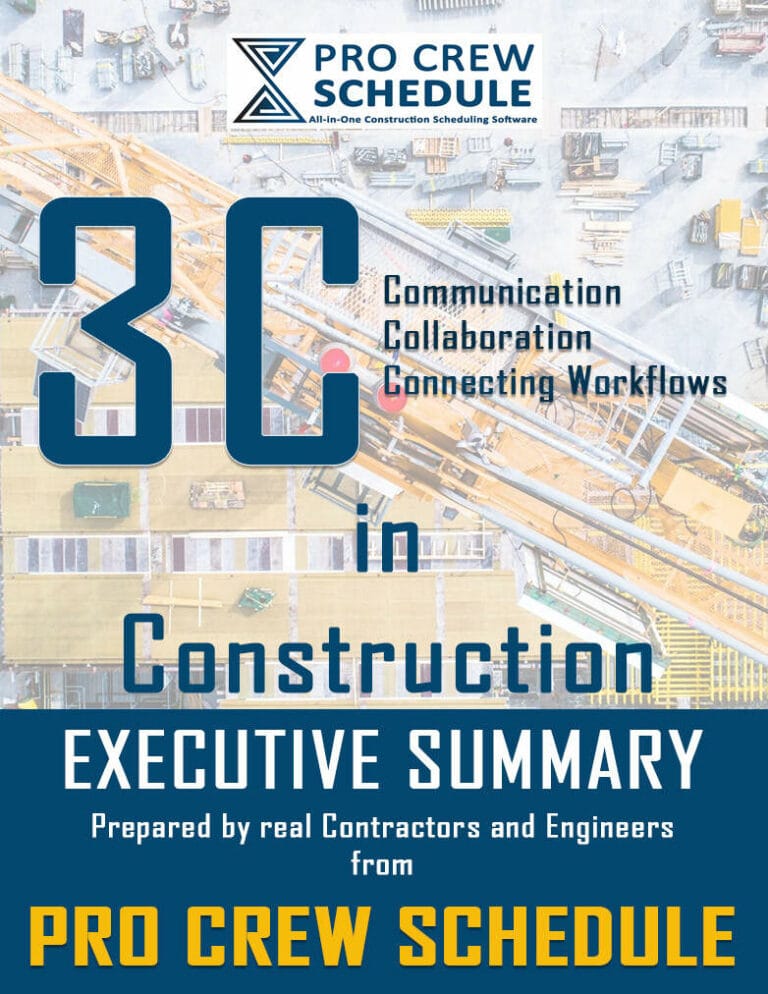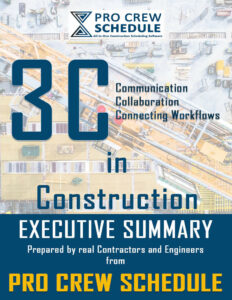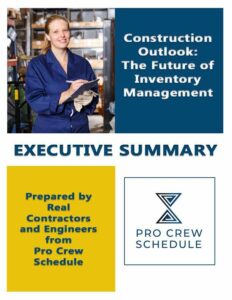Introduction
Miscommunication has been one of the biggest problems in the construction industry. When the methods of communication aren’t properly planned, it later becomes a challenge for a project leads to relay instructions to his members or a member reporting progress or problem to the leader. Consequently, the project will suffer from delays and the team may face issues and misunderstandings that stop productivity.
When construction collaboration is strong, team members pool their knowledge and resources to prioritize reaching shared goals dictated by the budget and timeline of the entire process rather than their individual goals. This, of course, ultimately, is the ideal way to managing construction. We will also provide actionable and practical tips to enhance communication between the office and the field, bridging coordination on the whole.
Learn more here.
Table of Contents
- Statistics On Construction Communication
- Importance of Connection in a Divided Industry
- Challenges of Unclear Team Collaboration
- Reasons To Incorporate Connected Workflow in Your Business
- 7 Ways to Bridge Communication Gap to Boost Productivity
- Step-By-Step Process of Setting Up a Collaborative Team
- How Construction Scheduling Software Can Improve Your 3Cs
Statistics On Construction Communication
When it comes to managing construction projects, communication is vital to project success and completion. Poor communication is one of the top reasons construction projects fail. In fact, it’s the reason one-third of the time, according to the Project Management Institute (PMI). From miscommunication to failing to communicate, poor communication is detrimental to any project, even if it succeeds in the end.
Look at it this way: of the projects with minimally effective communication, just 37% of those are done on time, 48% are completed within budget, and 52% meet their original goals. That’s opposed to projects with highly effective communication– 71% of which finish on time, 76% are completed within budget, and 80% meet their original goals. These statistics prove that clear and proper communication is vital for a construction project to have the best possible outcome.
Additionally, teamwork between field and office in construction begins with excellent communication. The two parties must share confidential information in a timely fashion to get the best results. The flow of data between the office and job site is critical to a project, and any drawback in communication creates avoidable and unwanted stressors in managing construction.
Importance of Connection in a Divided Industry
Miscommunication and conflict on the job site are nothing to be surprised about. But although it’s nothing new, it doesn’t mean it’s one you just have to accept it. No one needs the stress that these two problems bring into a construction project. Additionally, they also happen to be very expensive. One research reported that the average cost of a conflict on a job site was $10,948.00! And that was just the average. A conflict might even cost you hundreds and thousands of dollars if not handled promptly and correctly.
Office and field communication is critical to a well-run project. However, countless times it feels like office and field teams operate their world. The office people may never foot on a construction job site because they are not required to do so. At the same time, workers in the field may never decipher the back-end intricacies of collaborating with different designers, architects, engineers, suppliers, and owners- all at the same time.
While office personnel is integral to coordinating nearly all aspects of the project behind the scenes, at the same time, without the skillset and dedication of the boots on the ground, nothing will ever get finished or done right. Each discipline contributes its talents to the construction project, and it’s vital to strengthen the respect and trust between the different players.
Challenges of Unclear Team Collaboration
Inequality, poor communication, incompleteness, and litigation hardly ever lead to great partnerships. Still, many companies suffer from the status quo because they are daunted by the side effects of drifting away from the system and 100% committing to collaboration and construction.
One of the common contention points experienced between the jobsite and the office is the barrier in communication regarding what’s going on in the field at any given point in time. When office and field communication breaks down, you’ll experience:
- Loss of Data: If the worker on-site fails to report instances, the information will never make it to the main office or the master file. This slight overlook hinders the whole construction team’s ability to work effectively or analyze what changes could be implemented for better productivity.
- Schedule Delays: More than costing good work relationship, disconnection can also cost time. Moreover, scheduling conflicts can also push the completion schedule back substantially.
- Loss of Profit: A lack of up-to-date construction information can result in errors and more rework to get done. This can also be translated into additional materials, more staff hours, unnecessary costs, and less profit.
Now that we’ve addressed the downside of disconnected construction teams, what steps are needed to be taken to bridge the gap between the field and office to enhance data flow, improve timelines and prevent budget loss? Here are some of the common difficulties construction professionals encounter in managing projects:
1. Confusion On Site
Miscommunication can lead to all sorts of issues onsite. One of the most significant troubles it can cause is confusion, which can hit anyone (from field workers to major stakeholders) and negatively impact the project in many different ways.
Reporting that’s incomplete, inconsistent, unclear, and late can produce other mistakes that turn into delays and cost overruns.
This is why keeping messages clear and concise is essential. They should be short, simple, and direct to avoid or at least lessen confusion.
Also, it’s always preferred to communicate in real-time. Ensure that everyone is in the loop and on the same page to lessens mistakes from happening.
2. Project Delays
Delays are one of the worst things to happen on a project. When one thing falls through, it can start a domino or chain effect that progressively accumulates delays. A significant culprit for this problem in construction is poor communication.
Delayed information flow, unclear messages, and talking to the wrong person are just some forms of bad communication that can result in wrong interpretation or confusion. Subsequently, these can cause mistakes and delays.
It would help if you used a construction planner to keep track of tasks, jobs, deadlines, goals, and workers for the project’s duration. Then, regularly update all who are involved in the project.
3. Overspending and Exceeding Budgets
Mistakes and delays cost a project a lot of money. PMI says that more than half of all project budget risk is because of ineffective communication and poor time management to communicate with the team.
More often than not, miscommunication and poor communication result in additional and unnecessary expenditure. Because of an issue caused by miscommunication, the project would have to let out money (and time) in order to rectify the mistake.
For instance, the project and procurement manager decide on a change of building material but have failed to communicate it in a timely fashion. Chances are you’ll have to eat the cost of the wrong material and purchase the right one.
Sometimes, the terminology is the reason for mix-ups. Perhaps the term used by the vendor is not the same as what you use onsite.
4. Safety Risks
Construction is already a dangerous, high-risk industry to work in, but ineffective communication increases the risks.
Construction sites are riddled with opportunities for injuries, such as tripping or falling hazards, the collapse of scaffolding, and open wires. In the US, around 900 fatal and more than 200,000 non-fatal construction incidents are reported each year, making the industry’s fatality rate higher than the national average for all industries.
While the industry is full of safety risks, you’ll find that inadequate safety communication is behind it all. Three common causes of poor safety training include:
- Workers disengage during safety training because they are unfamiliar with the terminologies.
- Workers think it’s easier to play it safe because they are afraid of being criticized for pointing out potential hazards when they discover them. Without bringing to light this information, the issue will not be handled.
- Most of the time, workers perceive communication about safety as negative. This stems from their experiences or observations that only bad situations are discussed, while the good they do are disregarded.
If safety communications got the workers speaking the same language and are on the same track, work-related injuries could be prevented. Furthermore, team morale, productivity, the budget, and schedules won’t be compromised.
5. Problem with Stakeholders
There are multiple stakeholders involved in every construction project. From the clients to investors, from general contractors to the workers, each one is integral to the project. More than that, the success of the project heavily depends on the effective and comprehensive information exchange among them.
When there is failure to communicate, in serious instances, disputes can happen as a result of poor communication (which is one of its leading causes). And delays in the project are not the only adverse effect of disputes. In some instances, when clients are particularly unhappy with how things were handled, your reputation in construction can be sullied. That’s why you should regularly update stakeholders with factual and accurate information.
Reasons To Incorporate Connected Workflow in Your Business
As a result, this leads to:
- Reduces wasted three major resources– manpower, money, and time
- More satisfied clients and project stakeholders
- Better company reputation
- More repeated clients and referrals
- Fewer construction punch list and rework
- On-time project delivery schedule
- Projects stays on budget
- Higher ROI or return of investment
Successful collaboration stems from streamlined workflows. Every member of the construction team knows their role, knows who or where to get the information they need, feels safe completing their responsibilities, and allows others to finish theirs. To be more specific, collaborative construction does the following:
1. Boost Internal Trust
Trust is generally the foundation of good team collaboration. In its absence, individuals and companies tend to prioritize their individual tasks and goals, which are often at the expense of others. As we’ve said before, this type of trust gap is one of the most common reasons for cost overrun.
2. Easy and Convenient
Collaboration should not be extraneous from the team’s regular job duties; it won’t happen if it’s hard to do. Contrarily, successful collaboration is easy. It allows members of the team to collaborate at the same time, naturally. Seamless collaboration is usually the result of an intelligent application of approaches and tools, again discussed below.
3. Inclusive, not Exclusive
Real collaboration should be grounded on inclusivity. Most of the research and thought leadership in today’s time shows that inclusivity is a better strategy for growth than exclusivity, which frequently leads to stagnation. Typically, this is referring to diversity with regards to background, age, ethnicity, and experience. However, inclusivity is also important when it comes to access to information. When information is strictly controlled, no one is well-served.
4. Depends on Roles and Responsibilities
In addition to bridging all team members, for collaboration to be a success, there have to be clear roles and responsibilities established. Everyone should know which duties they are responsible for, and workflows and systems should be set up to where each person involved knows the subsequent chain of command.
5. Foster High-Quality Communication
It’s vital to understand that communication is the key to collaboration.
Intelligent, successful construction companies avoid this by setting up cloud-based, easily accessible construction scheduling software that makes it easy to upload and download files and documents, view them in real-time, make necessary updates, request information, ask and answer questions, interact with the platform off of WiFi and in a remote setting, and more. But, of course, at every step of the way, communication must be prioritized.
7 Ways to Bridge Communication Gap to Boost Productivity
1.Get Rid of Excel
In an advanced industry such as construction, it is essential to focus on real-time solutions for your workplace communication issues. Ancient technology solutions, such as Excel, might not cut either, especially when you’re not working with a system or software that allows all personnel to access the same applications and files.
Technology alone is not the answer to this dilemma— it’s the right technology that lets all the staff members centralize data and communication, such as project management software designed for the construction business. When everyone has access to all essential information in real-time, coordination and collaboration are accelerated between teams.
2. Switch to Mobile-First Approach
Seamless mobile access to all documents, plans, and systems are vital for connecting the office with the field. This enables employees to access information in real-time, whether in the office, on the job site, or at home. Jobsites typically run outside the standard working hours. If you have a significant change that occurs after office hours, your office staff may also need to be notified to make alternate arrangements for the workday to come.
Even if your current technology promises a mobile-friendly feature, look into what that means. By choosing the software that aligns with your construction crew management, the better chances both the office and field can connect when you needed it the most.
3. Get on The Cloud
Mobile apps that provide real-time communication often work through cloud technology. Meaning, it’s not only about installing applications on personal smartphones or devices; it’s about allowing for a program that each personnel connects to where the central information they need lives.
Even though there are various web-based construction management tools you can find in the market that is suited for construction professionals, it is better to opt for the ones that feature cloud technology. With the world transitioning to the digital era in all industries, the cloud is the place to be.
4. Standardize Your Technology
Field-specific technology isn’t always compatible with project management specific technology. Consequently, information tends to get lost or difficult to access when team members need it the most. Incorporating a solution that centralizes and collaborates field and project management workflows can put everyone in complete accord.
Moreover, standardized technology and processes are critical for your business. If you have no established technology, programs, and workflows and just let your employees run with their preferences, you won’t have real-time information to anyone. No matter how insignificant it may seem, standards can do wonders in keeping consistent information, enhancing communication effort on the whole.
5. Consider User-Friendly Application
There will always be traditional workers who will be apprehensive about adopting new technology and prefer to stick to the conventional methodology. The best way to encourage everyone in the company to embrace new platforms and technology upgrades is by ensuring that the programs you want to adopt are user-friendly and easy to understand and use.
However, there may still be some workers who dislike making changes, so you must make it mandatory to the whole company— but not without ample support. Proper training and providing enough transition period will help the entire workforce team up for success.
6. Create Shared Tasks and Goals
Creating shared tasks and goals that each member is informed with and encouraged to follow translates to a more cohesive project flow for any given project. While the project’s completion is the apparent end goal, keeping it at the forefront and establishing definite tasks will help propel each team member to have a common overall goal in mind as they work through the project.
Oftentimes, different workers have their own set of goals— finishing a portion of a project or just keeping up with their respective schedules. Usually, for the worse, these personal goals have a way to conflict with one another. Utilizing construction scheduling software task features can help teams create shared goals and track tasks each step of the way.
7. Centralize Data Storage
Rework is costly— in terms of money and in time. According to a recent study, 48% of all rework is caused by miscommunication. A data-driven culture aims to decrease the chances of losing information in the shuffle. Making the change in the work culture that enables all points to connect means you’ll decrease instances of conflict, improve the team’s overall productivity, and reduce costly errors in rework.
One of the typical reasons there are communication problems between the office and the field is that neither side understands what the other party does. Including visual aids, like photos and videos in your reports and attached to a presentation can help this problem immensely. Also, getting all the contractors and subcontractors aware of the schedule of everyone working onsite can help the office personnel have a clear picture of the workings on site. The right subcontractor scheduling software can help to streamline this intensive task.
Step-By-Step Process of Setting Up a Collaborative Team
1. Shift from Traditional to Modern Delivery Methods
Forget the traditional delivery methods and consider modern ones such as Integrated Project Delivery (IPD) partnered with Lean Construction– which takes the bird’s-eye view of any project–to provide much better results.
2. Create More Inclusive Contracts
Provide a contract that specifies the drawbacks for everyone in the event of failure.
3. Embrace Team Diversity
You will have difficulty creating collaboration in construction if you do not recognize and embrace diversity. That means Understand that your team is composed of diverse generations and backgrounds, multilingual and multicultural and populations, and those who adapt to alternative identities and lifestyle choices.
4. Remember That Your Team Are Humans, Not Robots
Show team appreciation and reward intentionality and initiative. Social activities never hurt anyone, as they encourage both teamwork and cohesiveness. Teams who want to spend time together would also want to work together, plain and simple.
When you start to consider what makes construction projects successful, delivery methods are often usually the common thing that comes to mind. However, empowering teams to succeed is just as essential. As the construction industry transition to a technology-first approach, the focus has changed from silos to collaborative processes and workflows. A vital part of generating the best results from these effective models is creating a high-performing team. Manage construction projects better with collaborative delivery methods to achieve cost savings, meet schedules, and ultimately— build your team’s trust.
How Construction Scheduling Software can Improve Your 3Cs
Using a digital communication tool specifically for construction can dramatically improve productivity and efficiency on any project.
One software that has all these qualities and is trusted by many is Pro Crew Schedule.
It offers a wide range of features for managing schedules and improving communication and efficiency. It increases productivity not only through effective communication, but it also has multitasking features for faster and better project delegation. The more important feature is it being on mobile.
Pro Crew Schedule is a cloud-based construction scheduling software, making communication readily available anytime, anywhere. Team members don’t have to buy expensive laptops just to check announcements, schedules, and messages as they can just check them on what’s already available with them – their phones.





